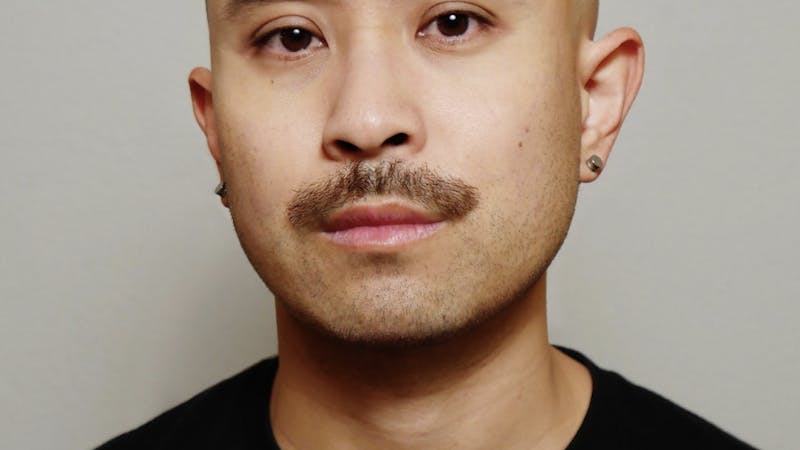President outlines plans
During the Student Association meeting Monday night, President David Leebron addressed the decreased endowment, concerns about the proposed Rice-Baylor College of Medicine merger and outlined the overall status of the university. After mentioning a short history of student, faculty and financial trends at the university, Leebron presented his plan for current and future campus expansion and said he intends to keep Rice in the running as a competitive research university while maintaining the small size of the school.
"We wanted to decide what would be the best size, take care of the housing issues and then cap out at 3,800 undergraduates, which would still leave us among the smallest research universities," Leebron said.
The president said he is not worried that the increased number of students will compromise the small faculty-to-student ratio.
"From my perspective, the ratio is much less important than the culture," Leebron said. "The dedication to the students and the time the faculty are willing to spend with students are aspects of culture that are really important to maintain."
Leebron also highlighted Rice's diversity, not only with the number of international students and other underrepresented minority students but also in academic fields. In last year's graduating class, the School of Humanities topped the list with the highest number of majors, at 218 students. Engineering was next with 202, followed by social sciences with 187 and natural sciences with 147. There were also 39 architecture and 29 music students. These numbers include double majors, which Leebron advised students not to complete solely for the purpose of résumé-building.
"We are a very balanced university, where our students cut across the curriculum," Leebron said. "We have excellence across the curriculum. That is part of my view and is part of who we are and part of what we are committed to."
He then moved to discussing the endowment, which has lost roughly $1 billion in the past year due to the economic downturn. As such, the Board of Trustees and the financial advisers have recommended spending 6.5 percent of the endowment each year. Ideally, the spending would remain at about 4 percent.
The university will also make decisions about how to make budget cuts, adding on to the few already in place. For example, the college serveries eliminated trays last March in hopes of reducing food waste. Other changes the university will make include reducing the number of faculty recruitments and reducing Fiscal Year 2010 operating costs by 5 percent.
"Every $50,000 we save is somebody's job," Leebron said. "So are we going to tolerate people wasting money? No. We are not going to tolerate it because somebody's livelihood is going to ultimately depend on that."
Regarding the merger with Baylor, Leebron says a decision must be made soon. Though the current drop in the endowment does not bode well for a potentially costly merger, Leebron noted his belief that the deal was hardly dead.
With the conjunction of the schools, Leebron said he would primarily want to create synergistic opportunities for students, meaning mutual benefits for both Baylor and Rice students, such as a medical humanities class.
Financial losses from Baylor's cost of operation and a potential change in Rice's undergraduate culture pose concerns for the administration.
"Because of the importance of the endowment, we cannot undertake this merger if it would be a permanent drain on the endowment," Leebron said. "Those resources are needed for what we do now."
Rebecca Jeun, a Jones College sophomore, said she wondered what would happen to the Rice undergraduate experience if the merger were to take place.
"I was glad that I went [to the meeting] because Leebron talked about a lot of different issues that I had questions about and didn't really know where to find [the] information," Jeun said. "I wanted to hear more about research collaborations and also more about whether or not we had any safeguards to protect the Rice culture after the merger, or if any considerations were taken into account about what would happen to undergraduate culture."
If the merger is to go through, Leebron assured undergraduates they would be a part of the decision. Currently, every school and department at Rice has an undergraduate program, so Leebron said undergraduate education would be a concern in the decision-making process.
"One of the advantages of the merger is that it would help maintain a position of renown and visibility in a world in which there are ever more competitive research universities," Leebron said. "And how we do that without changing the undergraduate experience at Rice is a challenge.
More from The Rice Thresher

Andrew Thomas Huang puts visuals and identity to song
Houston is welcoming the Grammy-nominated figure behind the music videos of Björk and FKA twigs on June 27.

Live it up this summer with these Houston shows
Staying in Houston this summer and wondering how to make the most of your time? Fortunately, you're in luck, there's no shortage of amazing shows and performances happening around the city. From live music to ballet and everything in between, here are some events coming up this month and next!

Review: 'Adults' couldn’t have matured better
Sitcoms are back, and they’re actually funny. FX’s “Adults” is an original comedy following a friend group navigating New York and what it means to be an “actual adult.” From ever-mounting medical bills to chaotic dinner parties, the group attempts to tackle this new stage of life together, only to be met with varying levels of success.

Please note All comments are eligible for publication by The Rice Thresher.